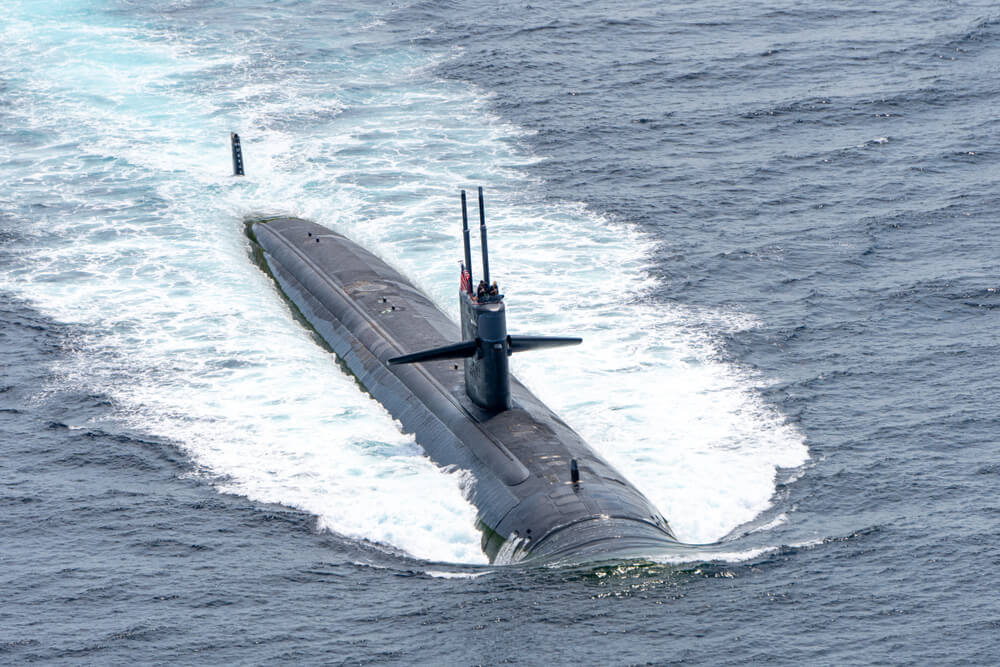Once again, the undersea domain is growing contested, as it was during the Cold War. Unmanned underwater vehicles (UUVs) promise to enhance the combat reach and responsiveness of existing U.S. nuclear submarines. They remain, however, a complementary capability, and not a substitute for the irreplaceable advantages of manned nuclear submarines.
The U.S. Navy should pursue the concept of teaming manned units — like attack submarines — with unmanned units as the best method to maximize combat potential.
A potent U.S. submarine force
Attack submarines (SSNs), including the Los Angeles, Seawolf and Virginia classes, are the Navy’s most agile and lethal undersea assets. Their missions include anti-submarine warfare (ASW), anti-surface warfare (ASuW) intelligence, surveillance, reconnaissance (ISR) and covert insertion of special operations forces (SOF).
With virtually unlimited range and endurance, SSNs can operate globally without surfacing, making them ideal for persistent presence in contested regions like the Indo-Pacific, where Chinese naval expansion poses a growing challenge.
The advanced quieting and stealthiness of U.S. nuclear submarines make them unseen and unheard to adversaries operating on the surface or in the undersea domain. The advanced sensors allow them to track adversary submarines and surface ships, deny access to strategic chokepoints and conduct ISR missions undetected.
In wartime, attack submarines can deploy the Mark 48 torpedo—unarguably the best ASW or ASUW weapon in the world—against enemy surface ships and submarines. Additionally, they can strike land targets with Tomahawk cruise missiles and disrupt enemy logistics and communications.
Ballistic missile submarines (SSBNs), currently represented by the Ohio, and soon the Columbia class, serve as the sea-based leg of the U.S. nuclear triad. Their mission is singular but vital: to provide assured second-strike capability in the event of a nuclear attack. Operating in deep ocean patrol areas, SSBNs are virtually undetectable, ensuring survivability and credibility of U.S. strategic deterrence. They carry approximately 70% of the nation’s strategic nuclear warheads and represent 100% of its survivable arsenal.
Guided missile submarines (SSGNs), converted from Ohio class SSBNs, offer a unique blend of firepower and covert capability. Each SSGN can carry up to 154 Tomahawk missiles, enabling massive precision strike capacity from a stealthy platform.
They also support SOF missions with onboard command centers, diver lockout chambers and dry deck shelters. Their ability to loiter undetected near hostile shores and deploy SEAL teams or autonomous systems makes them a potent tool for irregular warfare and intelligence collection.
The undersea threat
The threat to this force presented by potential adversaries has grown in recent years. The Chinese and Russian navies now field more advanced submarine designs with greater lethality than their recent predecessor’s.
The latest Russian SSN class (Yasen) is very quiet, which is the most important thing in submarine warfare, and speedy, with reports suggesting a quiet speed of 28 knots. It is also capable of deploying torpedoes, Kalibr class cruise missiles and Zircon hypersonic missiles—a lethal combination in the open ocean or in coastal regions.
In addition to the Yasen class submarine, the Russians have produced the Belgorad or Project K-329, which is a modified Oscar II class submarine with two notable features—the ability to deploy the recently revealed Poseidon long-range nuclear tipped torpedo and a deep-diving nuclear powered mini-sub. These capabilities represent a clear and present threat to the U.S. homeland and our critical infrastructure.
On the other side of the world, Chinese submarines have also improved in recent years with the Type 95 boat under development assessed to have an improved acoustic signature.
In recent years, China’s Premier Xi Jing Ping has formed a “no limits” partnership with his counterpart Vladimir Putin and the Russian Federation. The term “no limits” has raised eyebrows in the West as China has proceeded to violate international sanctions on the purchase of Russian crude in order to fuel Putin’s war effort in Ukraine. There is also clear evidence of Chinese lethal and non-lethal support to the Russian war effort.
An even bigger concern is what the Chinese might receive in return for their support and cooperation. Transfer of advanced submarine technology from Russia to China would enable a generational leap in Chinese submarine development and remains a significant concern in the midst of China’s monumental naval arms race. China already has improved its fleet of submarines in recent years. U.S. assessments of the Type 95 boat under development conclude that it has an improved acoustic signature.
China also reportedly is at work on a vast network of seabed and unmanned vehicle-mounted sensors, enabled by artificial intelligence, to track U.S. submarines across wide areas of the Western Pacific. Combined with advances in satellites, cyber warfare and more traditional threat areas like mines, this could make it a dangerous underwater battlespace for all but the most capable submarines.
How the U.S. Navy should respond
The best response to all of these threats remains the nuclear submarine, as embodied by the U.S. Virginia and Los Angeles class boats, as well as the current Ohio class ballistic and cruise missile subs, and the follow-on Columbia vessels that will replace them.
The United States plays an “away game” forward where the unlimited endurance of nuclear submarines works best.
Diesel submarines certainly have a place, such as the Baltic Sea where specialized and quiet Swedish air independent propulsion submarines operate against Russian threats, but they are not the choice of blue water navies seeking a strong offensive punch against opponent forces.
Manned nuclear submarines will undoubtedly be teamed with unmanned underwater vehicles (UUV’s) in the near future. Unlike the air and surface domains, however, this process is more complicated by the communications used with unmanned underwater systems and the speed, range/endurance and maneuverability limitations of battery-driven UUV’s.
This includes even the largest and most capable extra-large UUVs, about which there is much excitement currently, such as Ghost Shark and Orca. Teaming of manned and unmanned underwater platforms will widen and increase sensor range and augment weapon magazines of manned submarines. But UUVs will remain only a complementary and supporting capability as their overall endurance, armament, speed and maneuverability in blue water ocean are extremely limited when compared to their SSN overlords.
The nuclear submarine remains the apex predator of the deep, one that can strike hard, and if needed maneuver away from threats at high speed. Nuclear boats carry more weapons on average than conventional subs, thus letting them stay in the fight longer, inflicting more lethal results on opponents.
Nuclear submarines cost more than conventional boats, but they are worth every penny in a high-end fight against a peer competitor. Smaller, conventional unmanned submarines can support nuclear boats in a variety of ways including being additional weapons platforms and ISR assets.
Nuclear submarines have been at the leading edge of U.S. naval combat capability since their beginnings in the 1950s and were in the vanguard of naval forces arrayed against the Soviet Union as a key component of the 1980s maritime strategy. Nuclear submarines of all types are the U.S. asymmetric advantage against potential enemies, and their utility, now and in the foreseeable future, far outstrips manned or unmanned conventional submarines.







